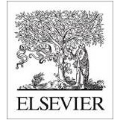A holobiont is made up of a host organism together with its microbiota. In the context of animal breeding, as the holobiont can be viewed as the single unit upon which selection operates, integrating microbiota data into genomic prediction models may be a promising approach to improve predictions of phenotypic and genetic values. Nevertheless, there is a paucity of hologenomic transgenerational data to address this hypothesis, and thus to fill this gap, we propose a new simulation framework. Our approach, an R Implementation of a Transgenerational Hologenomic Model-based Simulator (RITHMS) is an open-source package, builds upon the MoBPS package and incorporates distinctive characteristics of the microbiota, notably vertical and horizontal transmission as well as modulation due to the environment and host genetics. In addition, RITHMS can account for a variety of selection strategies and is adaptable to different genetic architectures. We simulated transgenerational hologenomic data using RITHMS under a wide variety of scenarios, varying heritability, microbiability, and microbiota heritability. We found that simulated data accurately reflected expected characteristics, notably based on microbial diversity metrics, correlation between taxa, modulation of vertical and horizontal transmission, response to environmental effects and the evolution of phenotypic values depending on selection strategy. Our results support the relevance of our simulation framework and illustrate its possible use for building a selection index balancing genetic gain and microbial diversity. RITHMS is an advanced, flexible tool for generating transgenerational hologenomic data that incorporate the complex interplay between genetics, microbiota and environment.
翻译:暂无翻译



